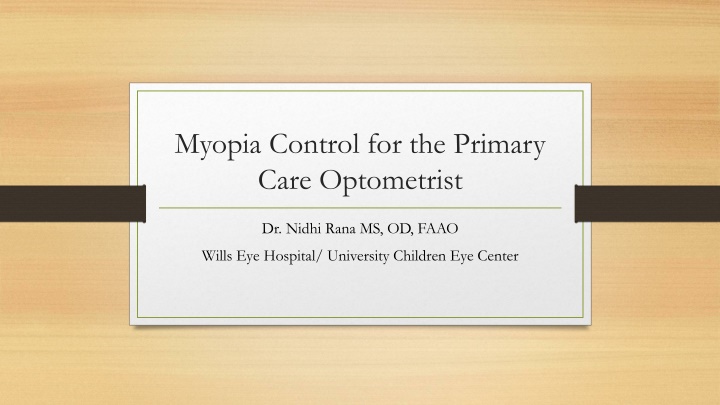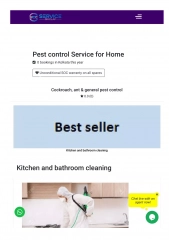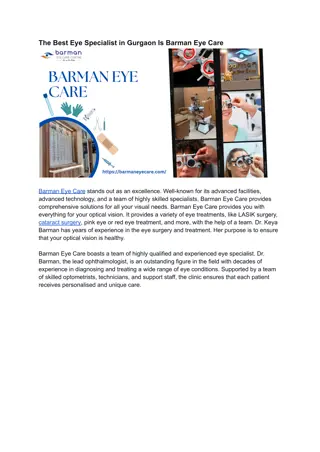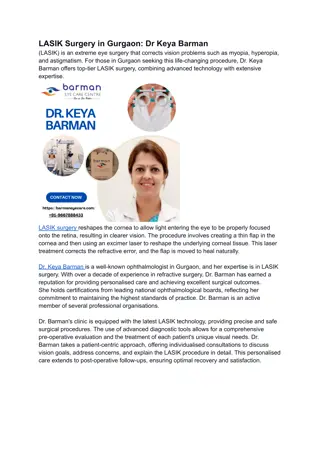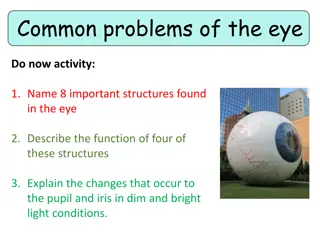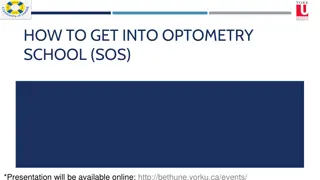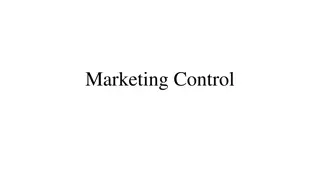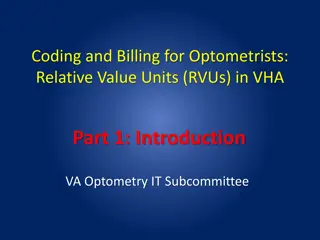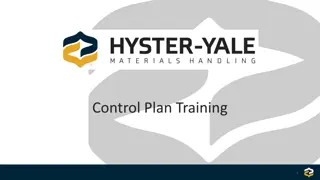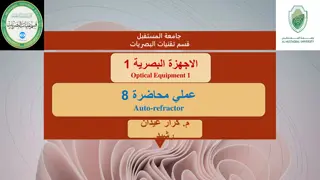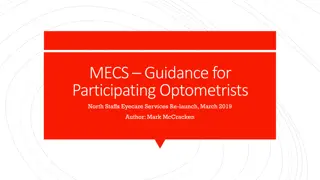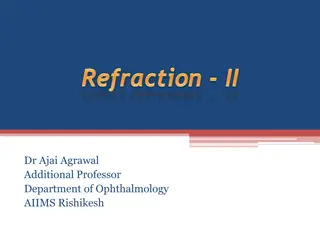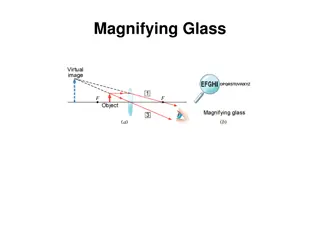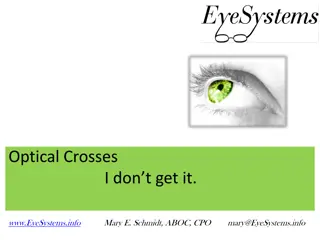Myopia Control for Optometrists
Myopia, or nearsightedness, is a growing concern with increasing prevalence, especially among younger populations in Asia. Genetics, environmental factors like prolonged digital device use, and lack of outdoor activities contribute to its development. Controlling myopia is crucial to prevent risks like myopic maculopathy, retinal detachments, and cataracts. Various treatment options such as orthokeratology and low-dose atropine are available. Optometrists play a key role in managing myopia through proper diagnosis, monitoring, and treatment.
Download Presentation

Please find below an Image/Link to download the presentation.
The content on the website is provided AS IS for your information and personal use only. It may not be sold, licensed, or shared on other websites without obtaining consent from the author.If you encounter any issues during the download, it is possible that the publisher has removed the file from their server.
You are allowed to download the files provided on this website for personal or commercial use, subject to the condition that they are used lawfully. All files are the property of their respective owners.
The content on the website is provided AS IS for your information and personal use only. It may not be sold, licensed, or shared on other websites without obtaining consent from the author.
E N D
Presentation Transcript
Myopia Control for the Primary Care Optometrist Dr. Nidhi Rana MS, OD, FAAO Wills Eye Hospital/ University Children Eye Center
No financial disclosures Email: drnidhirana@yahoo.com Cell: 856-981-0778
7yo F 2019: -1.00sph 2020: -2.50sph
Myopia Distance images are focus in front of the retina Mismatch happens increased axial length of the eye Normal process of emmetropization Match length of the eye with the power of its optical contents When lengthening of the eye occurs beyond emmetropization myopia
Myopia Classification based on degree of myopia Low myopia: < 3D Moderate myopia: 3-6D High myopia: > 6D
Myopia Myopia is becoming epidemic Prevalence: increasing Younger population (80 -90%): south/ south east asia
Myopia Causes Genetics (10%) Environmental Schooling/ ipad/ TV time Decreased time outdoors Increased near work Ethnicity Asians
Myopia Control Why control myopia ? Higher myopia risks Myopic maculopathy Retinal detachments Increased risk for POAG (50%) Increased risk for early onset cataracts (17%)
Myopia Currently 1/3rdworld s population has myopia Heading to world s population by 2050
Myopia Control Treatment Options Bifocals/ progressive lenses Orthokeratology ATOM Low dose atropine Misight contact lenses
Clinical Pearl Aim to NOT overmius or underminus myopia Cycloplegic exams in younger children
Myopia Control Orthokeratology Reshaping the cornea Mehcanism Decreasing peripheral hyperopic defocus Changes aberration profiles Accommodation/ convergence dynamics Axial length monitored for success rate
Orthokeratology Pros Cons Expensive $$$ RGP lens motivation Risks Infectious keratitis Endothelial changes Microvascular complications Done at night No glasses in daytime Works on high myopia
MiSight Contact Lens Peripheral hyperopic blur increases myopia Paracentral add power Changes peripheral defocus to myopia
MiSight Contact Lenses Pros Cons Expensive $$ Risks Infectious keratitis Soft contact lens Worn in daytime Can slow down progression Relatively new
Orthokeratology vs Misight lenses Orthokeratology RGP lens Overnight wear Expensive $$$ Risk Infectious keratitis MiSight lenses Soft contact lens Daytime wear Expensive $$ Risk Infectious keratitis
ATOM Low dose Atropine for the treatment of myopia Pharmacological agent Non selective muscarinic antagonist Doses 0.01%, 0.02%, 0.05%
Low Dose Atropine Pros Cons Once per night easy dosage Can slow down progression Pt prefer over CL Not much side effects Pharmacological agent Expensive $$
Myopia Control How to determine progression Axial length changes Dioptric changes Progression of myopia 6-9yo 0.75D/ yr Axial length 0.32mm/ yr 10-13yo 0.50D / yr Axial length 0.19mm/ yr
Case 1 6mths old with bilateral high myopia -18.00sph OU r/o stickler disease CL s vs glasses
Case 2 7yo F 2019 2020 -1.00sph -2.50sph
Case 2 Conditions to rule out Glaucoma Lens subluxations Retinal/ macular changes Keratoconus Family history of high myopia
